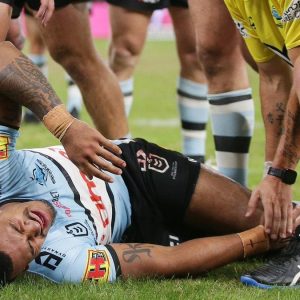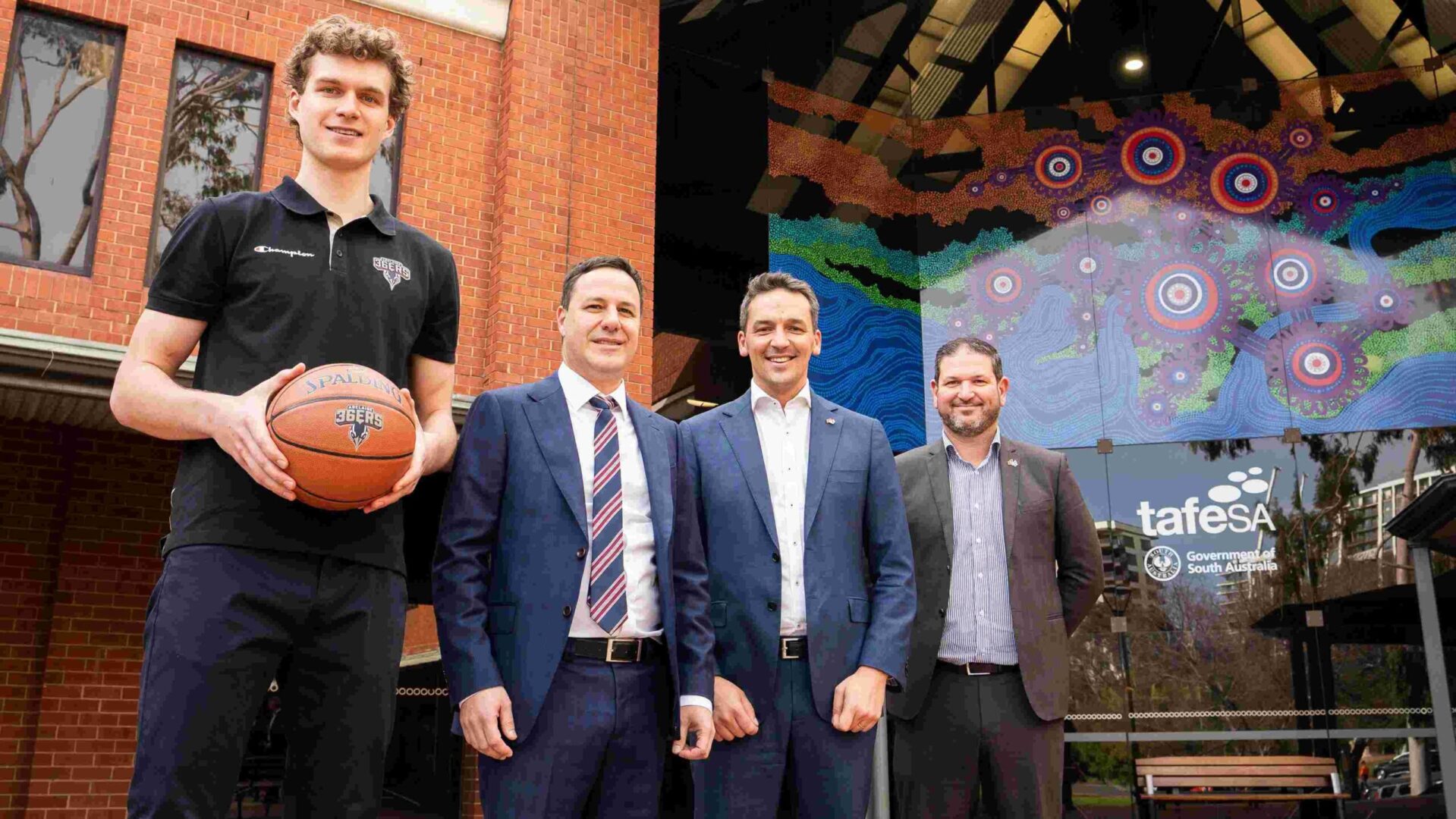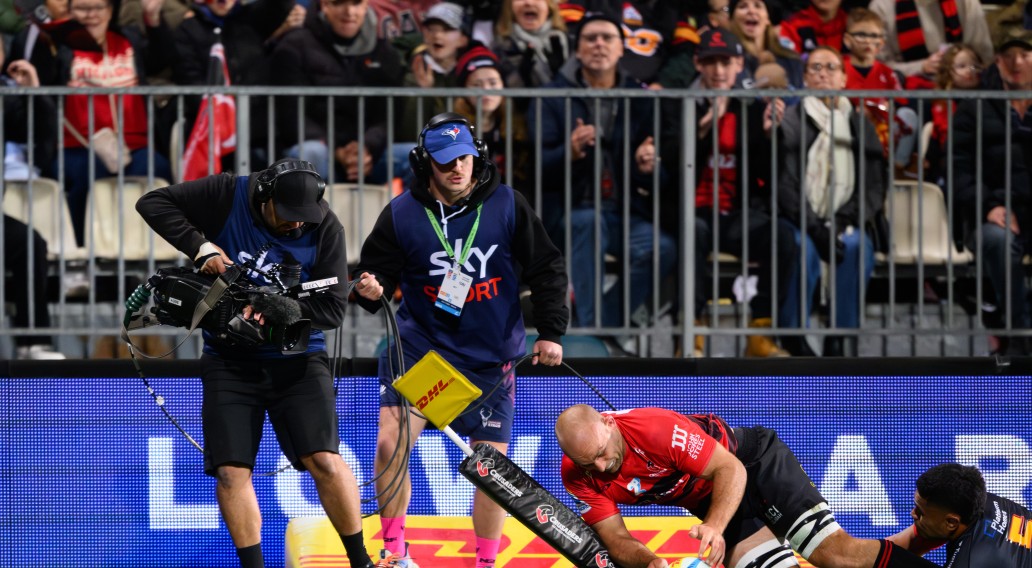[mkdf_dropcaps type=”normal” color=”#f55549″ background_color=””]I[/mkdf_dropcaps]
n an interview with Ministry of Sport, Concussion Legacy Foundation (CLF) co-founder and CEO, Dr. Chris Nowinski, discussed the recent study commissioned by the NRL into concussion and chronic traumatic encephalopathy (CTE).
The study, which was published on the Frontiers in Neuorology website by Christopher Levi and Andrew Gardner, claimed there was no direct links between head impacts and CTE, and revealed Dr. Levi serves as a consultant neurologist for the NRL and Dr. Gardner has received research funding from the NRL.
The study looked at more than 140 former elite NRL athletes and also enlisted the help of Harvard Medical School neuropsychologist professor, Grant Iverson.
Following the release of the study, Dr. Nowinski took to Twitter to criticise the findings, suggesting the study was either bad science, or something more, referring to the funding the study received from the league.
“My Twitter rant focused on one simple thing, but it was the third time this month a study critical of the relationship between head trauma and possible symptoms of CTE had mismeasured exposure,” Dr. Nowinski told Ministry of Sport.
“By exposure, I mean, we’re passed the time where we thought it was concussions directly leading to CTE, the science now supports, especially across our studies of hundreds of American Football players that had CTE, it’s the number of years of exposure.
“The relationship is similar to smoking and lung cancer, where you can never pinpoint that cigarette that triggered the first cancerous cells, but you know there’s a relationship between smoking two packs a day for 30 years, and a dramatically higher risk of lung cancer.
“That’s what we’re seeing in CTE, and we’ve published that loudly.
“Our initial study of 266 brains of football players of which most had CTE but not all, show your odds of developing CTE go up about 30% per year you play, and that we could not find the difference between whether those years were five years old, 10 years old, or even 30 years old.
“A larger sample might show some years are worse than others, but they’re all equal.
“Knowing that is published, the idea that there are studies today that are published that measure exposure by only asking how many years you played professionally and not asking how many years you played prior.
“Without asking that, it’s as absurd as doing a lung cancer smoking study today that asks how many years between the ages of 20 and 25 did you smoke cigarettes, and then try to draw these global conclusions on the relationship between smoking and lung cancer.
“I was frustrated to see that published, I was frustrated to see they couldn’t find a relationship between symptoms relating to CTE and years of play, touted by the researchers and newspapers that know better.
“The other question I asked was the correlation between the groups publishing this research and having received funding from governing bodies.
“At this point, it’s fair to ask, why are the people who are getting money from the NRL of NFL so bad at measuring exposure on a concept that’s so simple?
“Everyone can understand the activity of tackle rugby, whether you’re 13, 18, or 22, you’re still getting hundreds of hits to the head every year.
“Everyone in Australia needs to know it’s really sloppy and bad science that should not be published and I am at the point where I’m questioning the scientists who publish it.
“I don’t understand why their work is consistently so poor on this issue,” he said.
Delving further into the negatives of the NRL study, Dr. Nowinski said it is important to question the credibility of the research in order to better protect the athletes involved.
“I don’t know everyone they [the NRL] have invested in, so it wouldn’t be fair to say they’ve chosen not to invest in the right people,” Dr. Nowinski said.
“There’s a number of researchers in Australia who are doing good work like Alan Pierce with clinical work.
“The lead scientist who conducted that study, also was quoted a few months back saying: ‘we aren’t going to know if there’s a cause-and-effect relationship between head trauma and CTE for a generation or two’, which is the most preposterous statement said about CTE in a long time.
“That’s not how you conduct research on environmental exposures and disease, but it’s a great message if you’re asking for money from professional sports leagues.
“The reality is the relationship between head trauma and CTE already meets the Bradford Hill criteria for causation, which is the most commonly cited epidemiological causation criteria.
“A lot of people for the last seven years, everyone has said the case is closed, trauma is causing this, but there’s these guys saying they will be the last convinced, and they tell the leagues they are willing to go out and say the relationship’s not proven, somehow funding always shows up.
“I think we have to recognise that.
“The scientists might believe that, but that’s because maybe they’re not the right scientists for players to invest in.
“That’s the other question, there are men who are volunteering for this research, we don’t know which ones have CTE but we know some of them do, their time and their effort is being used against them to make the case they don’t need help, and that’s a message the athletes need to hear.
“You need to be very selective about who you let study you, some people publish objectively bad research that is impossible to draw any reasonable conclusions, but they’re trumpeting the null finding when their methods were the problem, on something as simple as asking people how many years they’ve played a sport.
“Is something different about head impacts when you’re getting paid for it?” he said.
When asked if sporting leagues are doing enough to protect athletes from concussions and CTE, Dr. Nowinski said it will be a gradual process to change the rules of sporting leagues, and there are some important questions that need to be asked.
“Sporting leagues are never doing enough, we need to get used to the idea we are trying to change the rules, practices and procedures every year to get better at protecting players,” Dr. Nowinski told Ministry of Sport.
“I’m generally supportive of longer stand-down times after concussion, but there is a reasonable hypothesis the longer you are required to sit out, the less likely you are to report symptoms.
“Watching games and seeing highlights, I don’t know how much reporting we are getting that isn’t obvious; most of the concussions I’ve seen diagnosed, have been players who were obviously concussed, so if you already aren’t reporting, then making a longer stand-down time won’t change anything.
“The players themselves are reading newspapers and listening to the scientists, so if NRL funded scientists are saying there’s nothing wrong with years of exposure and there’s no longer a connection to concussions, they will have no incentive to report because they’re being told it doesn’t matter.
“Increasing the criteria and having longer stand-down times are important.
“If you get hit in the head and you fail a HIA (head injury assessment) right afterwards, I thought everybody called that a concussion, it did not matter how you felt the next day, and that’s an important message for parents and kids.
“A concussion isn’t only a concussion if you feel bad the next day, a concussion is a concussion if you get a mechanism of impact, so your head moves or stops rapidly, or energy goes into your head, and then you have any change in brain function, even if its short-lived.
“Most concussions are short-lived, most of the time, you’ll get hit, you’ll feel wobbly, a little confused, bad memory, double-vision, and then you’ll get straightened out and if you go to bed, you might wake up the next day feeling okay.
“That doesn’t mean you didn’t have a concussion, that means you are on day one of your recovery.
“If it’s being said athletes who fail a HIA after a head impact don’t have concussions, that’s a dangerous message, and I worry about the public health consequences of that,” he said.







